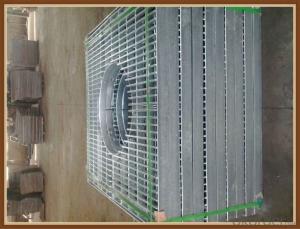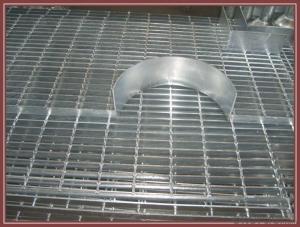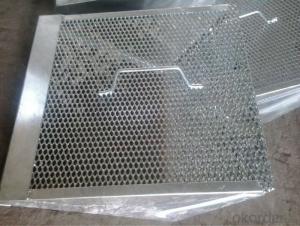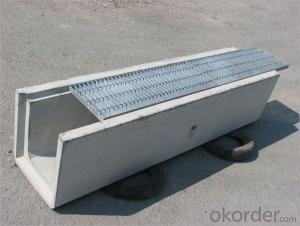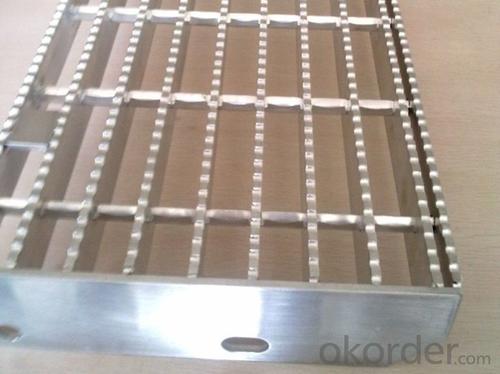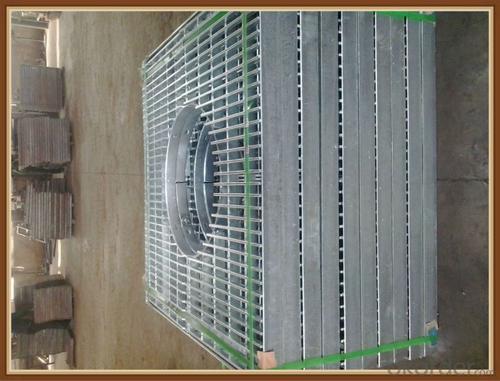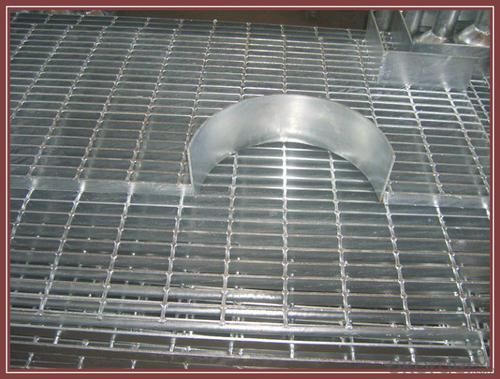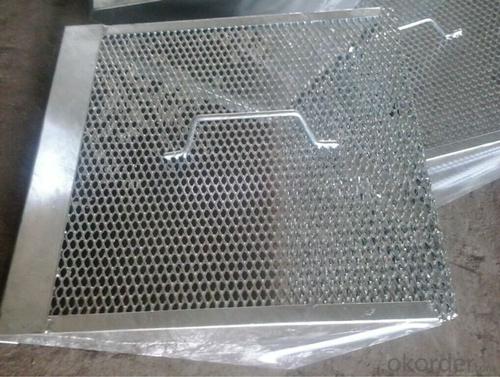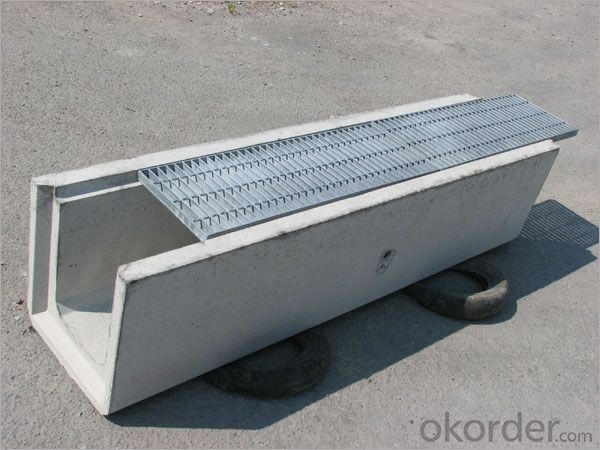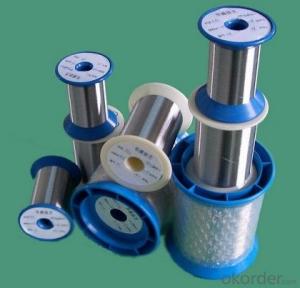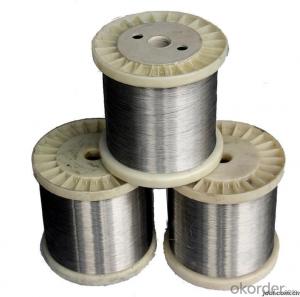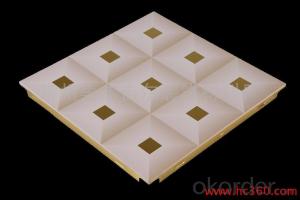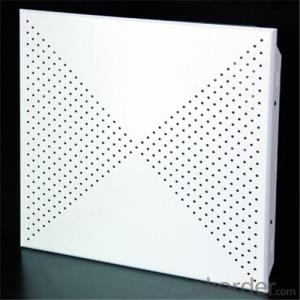12 Gauge Aluminum Sheets - Low Carbon Steel or Aluminum Gratings Fireproof Metal Ceiling
- Loading Port:
- Qingdao
- Payment Terms:
- TT OR LC
- Min Order Qty:
- 5000 pc
- Supply Capability:
- 6000000 pc/month
OKorder Service Pledge
OKorder Financial Service
You Might Also Like
1.Description of Drainage trench cover:
Drainage trench cover is widely used in the urban road, the square, the botanical garden, the wharf, the airport, the parking lot, the road, each kind of industry, the civil project, etc.
2.Main features of Drainage trench cover:
I--Carrying 20 tons of weight
II—Carrying 14 tons of weight
III---carrying 6 tons of weight
IV---carrying 2 tons of weight
V---Carrying pedestrian weight
3.Glass Wool Blanket Images:

4. Drainage Trench Cover Technical Parameters:
These drain cover plate applies to the road cross-sectional and longitudinal drain. The drains width ranging from 200mm to 550mm.
A means the steel grating length
H means the steel grating height
A means the frame length
H means the frame height
5.FAQ
We have organized several common questions for our clients,may help you sincerely:
①How about your company?
A world class manufacturer & supplier of Drainage trench cover is
one of the large scale professional investment casting production bases in China,consisting of both casting foundry forging and machining factory. Annually more than 8000 tons Precision casting and forging parts are exported to markets in Europe,America and Japan. OEM casting and forging service available according to customer’s requirement.
②How to guarantee the quality of the products?
We have established the international advanced quality management system every link from raw material to final product we have strict quality test; We resolutely put an end to unqualified products flowing into the market. At the same time, we will provide necessary follow-up service assurance.
- Q: What specific considerations or precautions should be taken into account when using aluminum sheets in environments with high moisture levels?
- <p>When using aluminum sheets in damp or wet environments, it's important to consider the potential for corrosion. While aluminum is generally corrosion-resistant due to its protective oxide layer, it can still be susceptible to certain types of corrosion in the presence of moisture, especially if the environment is acidic or saline. It's crucial to use high-quality aluminum alloys that are designed for such conditions. Additionally, proper surface treatment such as anodizing or applying protective coatings can enhance resistance to corrosion. Regular inspections and maintenance are also recommended to check for signs of corrosion and to address any issues promptly.</p>
- Q: This question asks for an identification of various types of aluminum sheets that are typically utilized in construction projects.
- <p>Aluminum sheets used in construction come in various types, each with specific properties and applications. Common types include: 1) Mill Finish Sheets: These have a natural aluminum finish and are used for applications requiring a raw aluminum look. 2) Painted Aluminum Sheets: Coated with paint for enhanced durability and color options, suitable for exterior applications. 3) Anodized Aluminum Sheets: Durable and corrosion-resistant, often used for architectural features. 4) Embossed Aluminum Sheets: Offered with various textures for design purposes. 5) Perforated Aluminum Sheets: Used for decorative or functional purposes, such as ventilation. 6) Aluminum Composite Material (ACM) Sheets: Consisting of two aluminum sheets with a non-aluminum core, used for cladding. Each type is chosen based on the project's specific requirements for aesthetics, strength, and environmental resistance.</p>
- Q: the aluminium pull tabs are in a jucy juice bottle
- 82% okorder /
- Q: This question asks for the method to determine the quantity of aluminum sheet required for a specific project.
- <p>To calculate the amount of aluminum sheet needed for a project, first determine the dimensions of the area to be covered. Measure the length and width to find the total area in square units. If the project involves complex shapes, break it down into simpler shapes like rectangles and circles, and calculate the area for each. Multiply the total area by the thickness of the aluminum sheet required. Finally, consider any additional material for overlaps or wastage, typically around 5-10%. The total volume calculated will give you the amount of aluminum sheet needed for the project.</p>
- Q: Are aluminum sheets fire resistant?
- In reality, fire resistance characterizes aluminum sheets. With a high melting point and difficulty in igniting or burning, aluminum emerges as a non-combustible substance that hinders fire propagation. Consequently, aluminum sheets find extensive utilization in sectors like construction and aerospace, where fire resistance assumes paramount importance. Nevertheless, it is crucial to acknowledge that although aluminum inherently possesses fire resistance, the materials or substances affixed to or in contact with the aluminum sheet might lack such properties.
- Q: Are aluminum sheets suitable for construction applications?
- Yes, aluminum sheets are suitable for construction applications. Aluminum is a lightweight and durable material that is corrosion-resistant, making it ideal for various construction projects. It is commonly used for roofing, siding, and wall cladding, as well as in structural applications like beams and columns. Additionally, aluminum sheets offer excellent thermal and electrical conductivity, further enhancing their suitability for construction purposes.
- Q: Can aluminum sheet be used for automotive body panels?
- Yes, aluminum sheet can be used for automotive body panels. In fact, aluminum is becoming increasingly popular in the automotive industry for its numerous advantages. Firstly, aluminum is lighter than steel, which helps to improve fuel efficiency and overall vehicle performance. Additionally, aluminum is highly corrosion-resistant, making it a durable choice for automotive body panels that are exposed to the elements. Aluminum also has excellent formability and can be easily shaped into complex designs, allowing for greater design flexibility in vehicle manufacturing. Furthermore, aluminum offers superior crash absorption capabilities, enhancing the safety of vehicles. However, it's important to note that while aluminum is a viable option for automotive body panels, it may require specialized equipment and techniques for welding and repair.
- Q: Can aluminum sheets be used for food display cases?
- Indeed, aluminum sheets are suitable for food display cases. Owing to their remarkable strength, durability, and resistance to corrosion, aluminum is widely favored for such purposes. Furthermore, the lightweight nature of aluminum facilitates the handling and transportation of these display cases. The clean and sleek look of aluminum also enhances the presentation of food items, making it an ideal material for showcasing a variety of foods. Additionally, aluminum is non-toxic and does not interact with food, guaranteeing the safety and hygiene of the displayed items. Ultimately, aluminum sheets are a suitable and pragmatic option for constructing food display cases.
- Q: What are the different types of coatings applied to aluminum sheet?
- There are several types of coatings that can be applied to aluminum sheets. Some common ones include anodizing, powder coating, and organic coatings. Anodizing involves creating an oxide layer on the surface of the aluminum, providing corrosion resistance and enhancing durability. Powder coating involves applying a dry powder to the aluminum surface and then curing it to create a protective and decorative layer. Organic coatings, such as paints or lacquers, can be applied to aluminum sheets to provide color, protection, and aesthetic appeal.
- Q: How is the thickness of aluminum sheets measured?
- The thickness of aluminum sheets is typically measured using a tool called a micrometer. A micrometer is a precision instrument that includes a calibrated screw mechanism with a spindle and anvil. To measure the thickness of an aluminum sheet, the sheet is placed between the spindle and anvil of the micrometer, and the screw is turned to exert pressure on the sheet until it is firmly held in place. The measurement is then read from the micrometer's scale or digital display. Another commonly used method is a thickness gauge, which uses a set of parallel anvils to measure the thickness of the sheet. The sheet is inserted into the gap between the anvils, and the measurement is obtained by reading the scale or display on the gauge. Both methods provide accurate and reliable measurements of the thickness of aluminum sheets.
Send your message to us
12 Gauge Aluminum Sheets - Low Carbon Steel or Aluminum Gratings Fireproof Metal Ceiling
- Loading Port:
- Qingdao
- Payment Terms:
- TT OR LC
- Min Order Qty:
- 5000 pc
- Supply Capability:
- 6000000 pc/month
OKorder Service Pledge
OKorder Financial Service
Similar products
Hot products
Hot Searches
Related keywords

